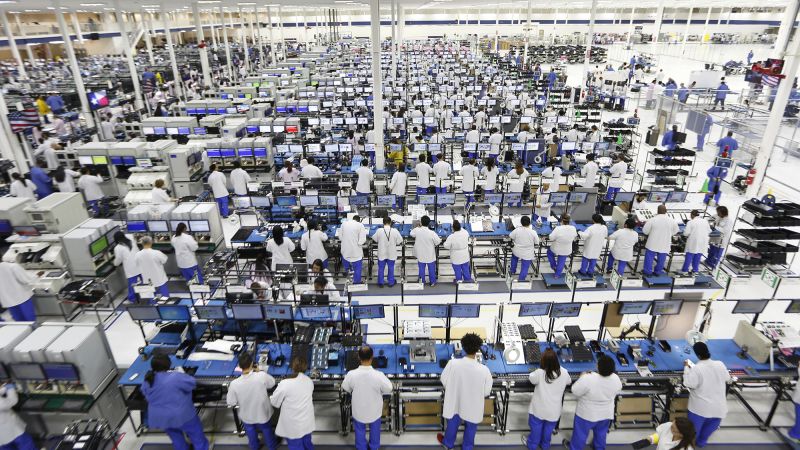In 2013, Motorola attempted to reclaim market share in the smartphone industry with its “Made in the USA” initiative, but the effort faltered. Now, as President Donald Trump calls for Apple and Samsung to shift production to the United States, the challenges faced by Motorola a decade ago have resurfaced. Dennis Woodside, former CEO of Motorola and current CEO of Freshworks, shared insights into the complexities of U.S.-based smartphone manufacturing.
Motorola’s decision in 2013 to produce the Moto X smartphone in Fort Worth, Texas, was driven by a desire to appeal to consumers interested in domestic production. “There was a segment of customers that said, ‘Hey, if you produce products in the United States, I’m more likely to consider them,” Woodside explained. The assembly of the Moto X not only targeted domestic shoppers but also offered customization options that were not available with competitors like the iPhone or Samsung Galaxy.
Despite these advantages, the initiative encountered significant hurdles. The factory closed in 2014 after selling only 500,000 units, failing to sustain the production costs associated with U.S. assembly. According to analysis from Strategy Analytics, this was far below expectations for a product meant to compete directly with major brands.
Labor market challenges played a crucial role in the decline of Motorola’s U.S. production. Woodside highlighted the difficulty in attracting skilled workers, particularly when alternative job opportunities in sectors like retail and food service were abundant. “There’s probably several hundred (phone) parts, and they’re tiny,” he said, describing the intricate nature of the work. “Most people were not accustomed to that kind of work at all in the U.S.”
The implications of this labor shortage extend beyond Motorola. The U.S. manufacturing sector has been grappling with a skills gap, leading to a decline in factory jobs. Data from the U.S. Bureau of Labor Statistics indicates that approximately 11,000 manufacturing positions were lost between June and July 2023. The challenge of finding qualified staff has been exacerbated by changing workforce preferences, with surveys indicating a reluctance among Americans to pursue factory jobs.
As the situation evolves, the U.S. faces pressure to bring production back onshore, especially with looming tariffs on imports from China, effective from August 12, 2023. India has emerged as the top exporter of smartphones to the U.S. and will also contend with a 25% tariff on its exports starting August 7, 2023.
Woodside’s experiences with Motorola serve as a cautionary tale for any company looking to manufacture smartphones in America today. “You have to have a very strong value proposition to the employee,” he advised. Companies must also be strategic about automation and economic viability to remain competitive in the market.
The manufacturing landscape in China contrasts starkly with that of the United States. In 2023, approximately 123 million people were employed in China’s manufacturing sector, significantly bolstered by a well-trained workforce. Apple, for example, has leveraged China’s skilled labor and advanced manufacturing capabilities, with facilities operating at remarkable efficiencies.
As the U.S. considers its manufacturing future, experts like Sujai Shivakumar of the Center for Strategic and International Studies emphasize the need for a workforce capable of meeting the demands of modern manufacturing. “A workforce is as important as electricity and transportation infrastructure to a manufacturing strategy,” Shivakumar stated.
Looking ahead, companies must weigh the realities of the labor market against their ambitions for U.S.-based production. For smartphone manufacturers, understanding the intricacies of their products and the necessary skills for assembly will be crucial. Woodside cautions, “Understanding the nature of the product you’re making, and thinking about… ‘Are we going to have to completely train the workforce to understand this specific product?’ That’s something we didn’t quite anticipate.”
As the conversation around domestic manufacturing continues, the lessons learned from Motorola’s past may serve as invaluable guidance for future endeavors in the smartphone industry.







































































